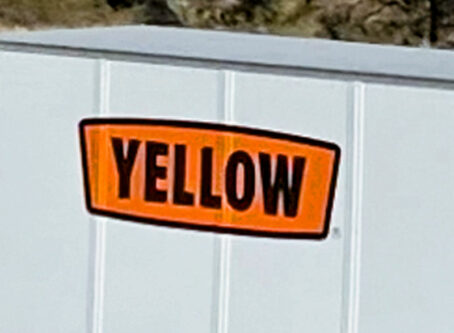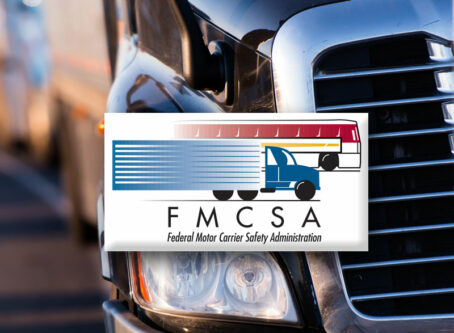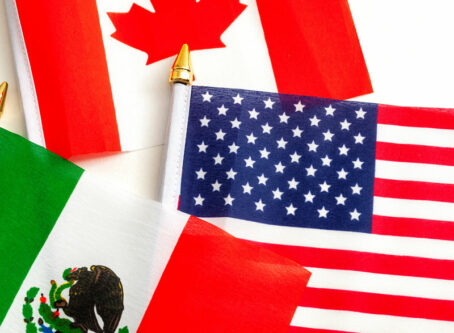Clean and protect your cab from COVID-19 contamination
Q. The following is a compilation of many questions concerning the coronavirus and how to clean a potentially contaminated cab. They involve primarily these concerns:
- What materials are best to use inside my cab?
- Are there any cleaning materials I should avoid?
- Is there anything that I should not attempt to clean?
- Are there any special techniques to apply the different products?
- Where outside the cab do I need to clean?
A. Excellent questions, everyone. In this day and age, we should probably clean our interiors whenever a stranger has had access to the cab. In many cases that will be quite often, so we should approach this in the most frugal way possible.
There are three categories of cleaners generally available and effective, each with its own characteristics, application techniques and requirements. They are soap solutions, chemical wipes, and sprays, either liquid or foam, in order of increasing cost. Let’s examine what we need to do with each, from most expensive to least costly. Remember, each is effective when properly applied.
Chemical/disinfectant sprays
Because COVID-19 transmits in droplet form and can be deposited on surfaces in a random manner, and since chemical sprays form droplets that deposit on surfaces, also in a random manner, we need to make sure that the spray is brought into contact with the virus in order to curtail contamination.
It is not enough to spray an interior in hopes that all the adversarial particles will meet. The most effective way to apply sprays is to use a soft, absorbent cloth. Spray the cloth and use it to wipe down the target surfaces. Then use a clean cloth to wipe the surfaces to remove residual spray.
Rather than purchasing commercial aerosol sprays for cleaning, you can make your own and put it in a hand-operated spray bottle. Using alcohol, keep the concentration above 60 percent. Use either 70% straight from the bottle or dilute 91%, two parts alcohol to one part water.
Bleach is an effective disinfectant when it fully covers the target surface for a long enough time. Mix 1/3 cup household bleach with one gallon of water. If applying from a hand sprayer, mix four teaspoons bleach per quart of water. Ideally, the solution should be applied using a clean cloth and allowed to remain on the surface for a minute. Apply liberally, and allow it to air dry before wiping off any residue.
Chemical wipes
These are similar to the spray technique, above, but with the chemical already applied, usually to a nonwoven paper. They are fully saturated and ready to apply. After application, the surface should again be allowed to air-dry, then wiped off with a clean dry cloth. Clean shop cloths would be ideal for this.
Caution: When using chemicals make sure that the surfaces to be cleaned will not be harmed by the cleaning agent. Avoid harsh chemicals such as bleaches or ammonia on organic surfaces, painted surfaces, and some plastics. Bleach can attack plastics, and many interior trim parts that appear to be chrome or wood are actually plated or printed plastic. If possible, test the chemical on an area that will not be visible if a reaction takes place. Always refer to the instructions on the labels and use common sense.
Soap solutions
The easiest and least expensive cleaning products are soap solutions. Most dish detergents contain soaps. (There is a chemical definition of what constitutes a soap.) If a dish detergent is soap-free it will state that on the label. Soaps without harsh chemicals (again read the label) attack the virus at reasonably low concentrations. These soaps are easy to apply, need only 20 seconds contact time and wash off most surfaces without any difficulty. Remember, the Centers for Disease Control recommends hand washing for only 20 seconds after possible exposure to COVID-19.
What to clean
All surfaces with which you come in contact should be cleaned. The obvious ones are seats, door handles, control knobs and levers, the steering wheel, shift knobs, and all dashboard switches. If mirrors are manually adjusted wipe them down, along with sun visors and window controls.
Outside the cab’s interior, clean the fuel filler, exterior and grab bars, the hood handles used during pre- and post-trip inspections, the dipstick assembly, and all other surfaces. If you have a sleeper don’t forget those interior surfaces. Include any heater or auxiliary power unit controls and vent windows. In other words, anything that you or anyone entering your cab might contact should be cleaned.
If you’ve been loaded by others, make sure to wipe down trailer door handles, straps and tie-downs and rear surfaces that others may have contacted.
How to proceed
Before getting started, thoroughly wash your hands. Then use germ proof gloves. Assemble your supplies before you start cleaning. They should include two buckets with warm water, cleaning materials (soaps, detergents, disinfectants, disinfecting wipes and sprays) clean towels or shop rags and brushes.
For most surfaces, you can apply a soapy solution from one bucket and after 20 seconds or longer, rinse it off using clean water from the second bucket.
For carpets, you can apply the soap solution with a stiff brush, and quickly wipe up with clean water. Dry as best you can. Leave doors and windows open to help the drying process. Be very cautious using spray disinfectants or pre-treated cloths and wipes. Test on all materials in an inconspicuous place and allow time for any reaction to take place.
When you are finished with each thorough cleaning, dispose of any personal protective equipment, such as gloves and face mask, if used. Change out of the clothes you wore to clean, and launder them. Wipe down your footwear, including the soles and heels. Although each virus is only 0.12 microns in diameter (smaller than 5/1,000,000-inches), they travel on moisture droplets from coughs and sneezes and can travel 6-feet or more. When COVID-19 droplets fall to the ground or floor, they can be picked up by shoes and boots.
If you travel with a pet be sure to clean the pet’s fur. It can carry the virus into your cab.
Wipe down your keys, wallet and cellphone, and any surface that may carry or transmit the virus.
Use common sense. Always be mindful of spreading germs, especially when near others. That, and practicing cleanliness at all times, should help keep you safe and healthy during this national crisis.
Paul Abelson, senior technical consultant, is a longtime contributor to Land Line. He regularly fields questions on taking care of your tractor and trailer in the Maintenance Q&A feature in Land Line Magazine. Here is his the latest magazine column.









